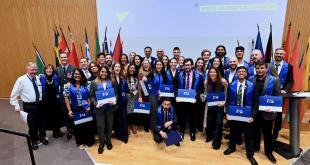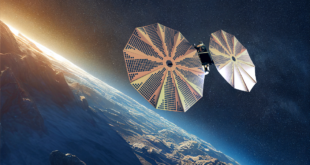
The UAE Space Agency, UAESA, has announced the details of its National Space Strategy 2030 and National Space Investment Plan, complementing the regulatory and legislative framework of the UAE’s national space sector and in line with the strategic objectives of the Agency.
The announcement was made during an official ceremony held in the UAE capital, Abu Dhabi.
During the ceremony, the UAE Space Agency shared details of its National Space Strategy, recently approved by the UAE Cabinet, chaired by His Highness Sheikh Mohammed bin Rashid Al Maktoum, Vice President, Prime Minister and Ruler of Dubai. The strategy aims to enhance the space sector’s contribution to the national economy and promote the UAE’s regional and international presence in the space sector.
It also strives to support the transition to a knowledge-based economy, create an effective regulatory environment, attract talent and develop human capacity, stimulate creativity among young people, as well as develop partnerships with industrial, educational, and research institutions while increasing international collaboration.
The National Space Strategy encompasses six main goals. These include providing competitive and world-class space services; enhancing advanced local capacity in space science, research and developing and manufacturing space technology, and launching inspiring space missions. Establishing high-level national expertise in the space sector; forging effective local and global partnerships and investments in the space industry, and developing a future-proof supportive legislative environment and infrastructure across the sector are also part of the strategy’s main goals which will be achieved via the implementation of over 20 comprehensive programmes and 80 initiatives.
The National Space Investment Plan seeks to realise the goals of UAE Vision 2021 and UAE Centennial 2071, which collectively aim to make the UAE the world’s leading country in economic, social, and environmental fields. The plan is in line with the Higher Policy for Science, Technology, Innovation and the strategy for the UAE’s Fourth Industrial Revolution, 4IR.
The plan also aims to make the UAE a major regional and global hub for space activities by building a competitive national economy based on knowledge, innovation, and future applications that integrate the latest physical, digital, and biological technologies; attracting small and medium-sized businesses through promoting investment in the space industry; and facilitating the work of the companies in the industry.
Commenting on the announcement, Dr. Mohamed Nasser Al Ahbabi, UAESA Director-General, said, “This strategy aims to support the realisation of the UAE’s vision in the space sector with the various elements that fall under its umbrella, including science, technology, applications and services. It also covers all the governmental, commercial and scientific activities of various space sector organisations, collaborating with other governmental entities, as well as academic institutions and space research and development centres.”
“The investment plan seeks to increase the national space sector’s contribution to economic diversification and attract foreign investment in the national space sector. Moreover, it aims to transform the UAE into the go-to destination for investors wishing to participate in the space sector,” added Dr. Al Ahbabi.
//WAM//
 SpaceWatch.Global An independent perspective on space
SpaceWatch.Global An independent perspective on space




